Research - (2021) Volume 9, Issue 2
Knowledge on Applications of 3D Printing in Dentistry among Dental Practitioners-A KAP Survey
Abarna Jawahar and Maragathavalli G*
*Correspondence: Maragathavalli G, Department of Oral Medicine and Radiology, Saveetha Dental College and Hospitals, Saveetha Institute of Medical and Technical Sciences (SIMATS), Saveetha University Tamilnadu, Chennai, India, Email:
Abstract
The use of 3D printing in dentistry has increased accuracy, eased delivery and decreased chair time allowing the dentist to provide more effective treatment. 3D Printing has applications in oral and maxillofacial surgery, orthognathic surgery, and produces models used for treatment planning. This study is based on current opinions and the use of 3D printing in several branches of dentistry. The aim of the study was to create awareness about applications of 3D printing in dentistry among dental practitioners. A questionnaire consisting of 10 questions were distributed to dental practitioners through an online survey website. The results from this study emphasize the need to increase the awareness of 3D printing in dentistry.
Keywords
3D printing, Rapid prototyping, Additive manufacturing, Computer aided designing, Selective laser melting
Introduction
3D printing describes a manufacturing process that produces objects by building one layer at a time adding multiple layers which results in the formation of an object. The emerging CAD-CAM technology and CBCT technology has resulted in revolutionary growth of 3D printing in medicine and dentistry [1]. When the term 3D printing was searched in pubmed.gov showed 6 publications in 2000, 61 in 2010 and above 1100 in 2016.3D printed anatomical models can be used as a new approach to surgical treatment planning and simulation. It provides an overview of complex structures before performing surgery. Studies on 3D printed dental implants proved that Selective Laser Melting (SLM) proved to be efficient in printing fully dense customized implants with increased strength. In cases where conventional implants cannot be used 3D printed customized subperiosteal implants can also be fabricated thus avoiding the need for an extra-oral donor tissue or bone. It is also possible to perform orthognathic surgical planning by the manipulation of digital orthodontic models without the requirement of face bow recording and physical model surgery. 3D printed surgical wafers are fabricated and can be used in orthognathic surgeries [2,3].
3D printing can produce temporary crowns with greater accuracy than the conventional method. 3D printing can also be used as a new treatment approach for root canal treatment of teeth with calcified pulp canal and periapical pathology. Use of 3D printed special drills and surgical guides, allows to overcome the difficulty in root canal location and also eliminates the risk of perforation. With the help of CBCT, intraoral scanners and a virtual implant planning software, special drill and virtual template guide can be designed and 3D printed. Using this root canal treatment can be done successfully without perforation. Guided endodontic approach is proved to be a secure, clinically possible method to locate root canal and avoid perforation in the tooth with calcified pulp canal. 3D printed anatomical models have also been proved to be effective for teaching purposes when compared with conventional teaching materials [4,5].
Our recent research portfolio slides numerous articles in reputed journals 6–10. Based on this experience we planned to pursue “Knowledge on applications of 3D printing in dentistry among dental practitioners - A KAP survey”
Materials and Methodology
Questionnaire study was done through an online website survey wherein 100 dental practitioners in Chennai were questioned about their knowledge on applications of 3D printing in dentistry. The survey consisted of 11 close ended questions. The objective of the survey questions was to create awareness about applications of 3D printing in dentistry among dentists. The questions included in the survey were as follows.
1) Do you think 3D Printing in dentistry is used in India?
a) Yes
b) No
c) May be
2) What is the source of information through which you got to know about 3D printing in dentistry?
a) Colleges
b) Clinical practices
c) Colleagues
d) Guest lectures
e) Seminars and presentations
3) Is 3D printing in dentistry becoming more popular in recent times?
a) Yes
b) No
c) May be
4) Do you think 3D printed materials used in dentistry will be biocompatible and does not have any harmful side effects in patients?
a) Yes
b) No
c) May be
5) What do you think might be the reason for 3D printing not widely used in India when compared to other countries in the field of dentistry?
a) Lack of awareness
b) Cost of the equipment
c) Complex techniques
d) All of the above
6) What do you think might be the benefits of performing mock surgery using 3D printed models in cases of complex craniofacial fractures and surgeries?
a) Surgery becomes more accurate and predictable
b) Less time spent on the operating table
c) Patient’s safety is ensured
d) All of the above
7) 3D printed implant guides makes the placement of implants in
a) Most accurate position and least complicated procedure
b) Least accurate and more complicated procedure
8) Do you think 3D printed drill guides and templates may be useful in doing root canal treatment in cases of calcified pulp canals?
a) Yes
b) No
c) May be
9) Are you aware that Invisalign (clear aligners) used in orthodontics are 3D printed?
a) Yes
b) No
c) May be
10) Would you like to venture more on the applications of 3D printing in dentistry?
a) Yes
b) No
c) May be
Results and Discussion
This study shows that out of many dentists 73% think that 3D printing in dentistry is used in India and 25% think it is not used in India (Figure 1). The source of information through which the dentist got to know about 3D printing was 39% through seminars and presentations, 26% through colleges, 15% through guest lectures, 13% through colleagues, 7% through clinical practice (Figure 2).
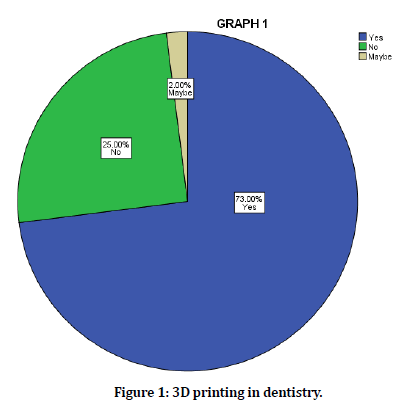
Figure 1. 3D printing in dentistry.
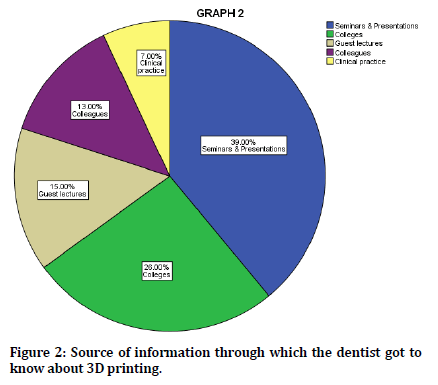
Figure 2. Source of information through which the dentist got to know about 3D printing.
82% of dentists agreed that 3D printing is becoming more popular in recent times and 14% disagreed (Figure 3). According to other studies advances in 3D imaging, CBCT, intraoral scanning and CAD/CAM technology 3D printing is becoming more popular and important technology [1]. When asked about the biocompatibility and harmful side effects of the 3D printed materials used in dentistry, 75% felt that it is safe and 6% felt it was unsafe and 19% felt it might be safe to use (Figure 4). Studies done on 3D printed appliances and prosthesis showed that they are comparable in terms of their biocompatibility, quality and function to the existing conventionally used methods in the dental technology laboratory [6-11].
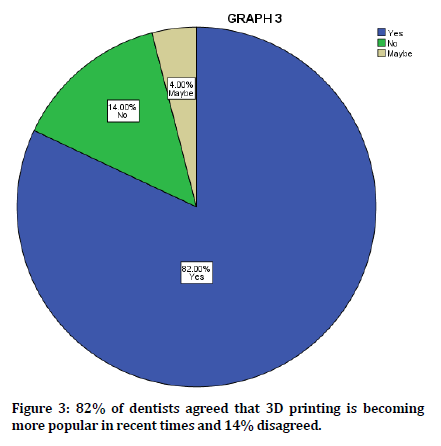
Figure 3. 82% of dentists agreed that 3D printing is becoming more popular in recent times and 14% disagreed.
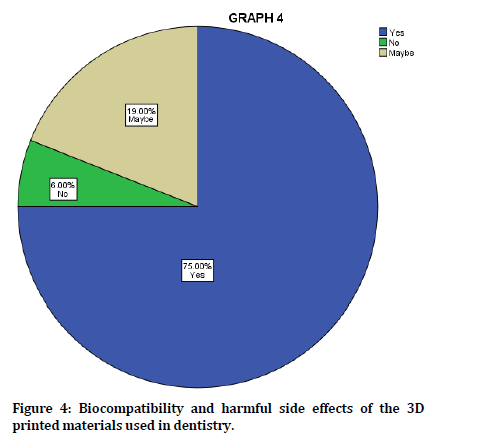
Figure 4. Biocompatibility and harmful side effects of the 3D printed materials used in dentistry.
When the dentists were asked what might be the reason for 3D printing not widely used in India when compared to other countries 40% felt lack of awareness about the technology, 15% felt due to cost of the equipment, 15% felt due to the involvement of complex techniques and 30% felt all of the given options (Figure 5). When asked about benefits of performing mock surgery using 3D printed models in cases of complex craniofacial fractures and surgeries, 8% of the dentist felt that surgery becomes more accurate and predictable, 2% felt that less time spent on the operating table, 2% felt that patient safety is ensured and 88% felt all of the mentioned reasons (Figure 6). According to literature 3D printed models allow pre-operative treatment planning and intraoperative management. Hence combining the planning process and surgical technique made the surgical outcome accurate [12,13].
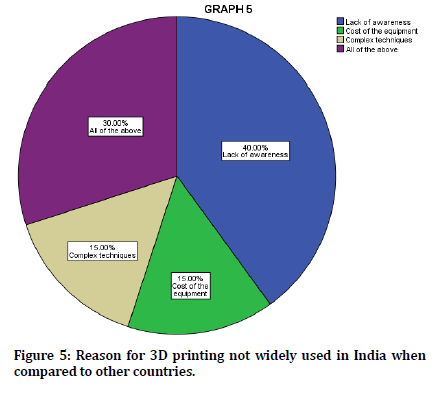
Figure 5. Reason for 3D printing not widely used in India when compared to other countries.
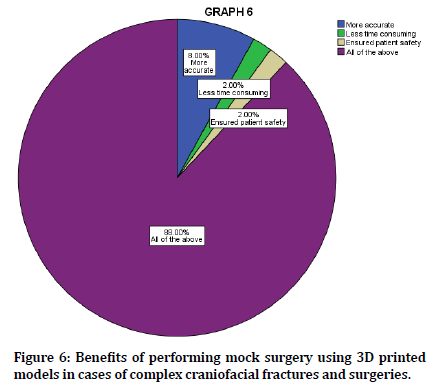
Figure 6. Benefits of performing mock surgery using 3D printed models in cases of complex craniofacial fractures and surgeries.
When asked about using 3D printed implant guides, 97% of the dentist felt that it makes the placement of implants in most accurate and less complicated procedures and 3% of dentists felt it as least accurate more complicated procedure by (Figure 7). A similar study concluded that using implant drilling guides for the placement of implants have proved to be more accurate and predictable when compared with non-guided surgery 14. 77% of the dentist agreed that 3D printed drill guides and templates may be useful in doing root canal treatment in cases of calcified pulp canals and 3% disagreed with that. 20% felt it might be used (Figure 8). In cases of calcified pulp canal, root canal treatment can be done by 3D printed special drill guides and templates. Based on this approach successful treatment has been done in many cases [15,16].
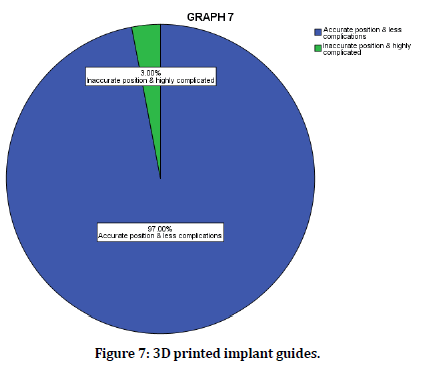
Figure 7. 3D printed implant guides.
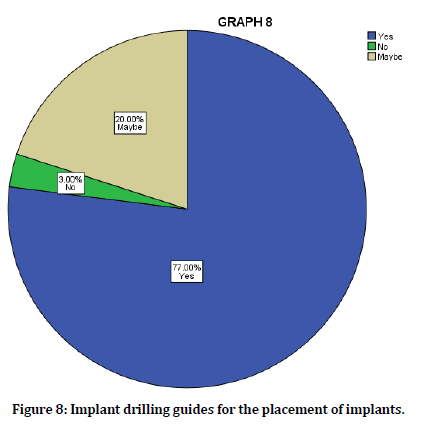
Figure 8. Implant drilling guides for the placement of implants.
When asked whether they were aware that Invisalign used in orthodontics are 3D printed 78% responded positively, 15% negatively and 7% said maybe (Figure 9). The Invisalign system realigns the patient teeth digitally, constructs a series of 3D printed models for fabrication of aligners which the patient will be receiving a new set of aligners every 2 weeks and repositions the teeth over a period of time1. When asked if the dentist would like to venture more on the applications of 3D printing in dentistry 93% responded positively and 5% said maybe and only 2% negatively (Figure 10).
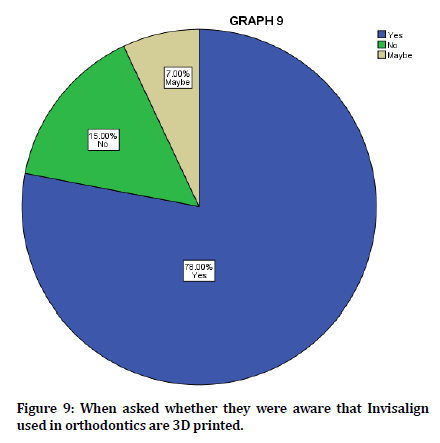
Figure 9. When asked whether they were aware that Invisalign used in orthodontics are 3D printed.
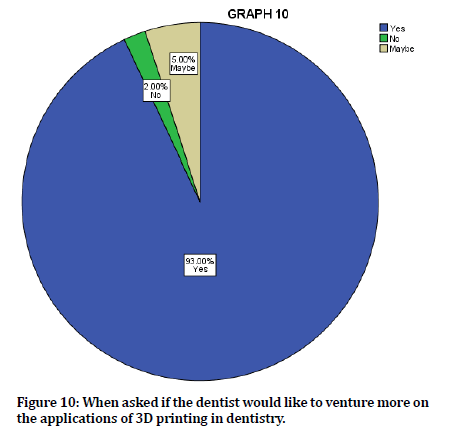
Figure 10. When asked if the dentist would like to venture more on the applications of 3D printing in dentistry.
Conclusion
The study concludes that 3D printing has several applications in dentistry.3D printed models can be used in treatment planning and simulation.3D printed implants and implant guides are proved to be more accurate and successful. In cases of calcified pulp canal 3D printed drill guides and templates can be used for root canal location.3D printing has been gaining increased attention in recent years among the dentists, allowing them to customize and fabricate prosthesis and removable appliances according to patient’s requirement. The patient’s data is digitally stored and printed only when needed, thus saving the physical space requirement. However, the cost of the equipment, inability to be used during emergency cases and very large objects cannot be 3D printed are the disadvantages of 3D printing. Even though the dentists are aware of 3D printing in dentistry, still lack of awareness of the technology exists among the dentists in Chennai.
Acknowledgement
The authors thank the college management for extending their support.
Conflict of Interest
The authors declare there is no conflict of interest.
References
- Dawood A, Marti Marti B, Sauret-Jackson V, et al. 3D printing in dentistry. Br Dent J 2015; 219:521–529.
- Ballard DH, Trace AP, Ali S, et al. Clinical Applications of 3D Printing: Primer for radiologists. Acad Radiol 2018; 25:52–65.
- Cousley RRJ, Turner MJA. Digital model planning and computerized fabrication of orthognathic surgery wafers. J Orthod 2014; 41:38–45.
- Rengier F, Mehndiratta A, von Tengg-Kobligk H, et al. 3D printing based on imaging data: review of medical applications. Int J Comput Assist Radiol Surg 2010; 5:335–341.
- Mai H-N, Lee K-B, Lee DH. Fit of interim crowns fabricated using photopolymer-jetting 3D printing. J Prosthet Dent 2017; 118:208–215.
- Subramaniam N, Muthukrishnan A. Oral mucositis and microbial colonization in oral cancer patients undergoing radiotherapy and chemotherapy: A prospective analysis in a tertiary care dental hospital. J Investig Clin Dent 2019; 10:e12454.
- Vadivel JK, Govindarajan M, Somasundaram E, et al. Mast cell expression in oral lichen planus: A systematic review. J Investig Clin Dent 2019; 10:e12457.
- Patil SR, Maragathavalli G, Ramesh DNSV, et al. Assessment of maximum bite force in oral submucous fibrosis patients: A preliminary study. Pesqui Bras Odontopediatria Clin Integr 2020; 20:482.
- Patil SR, Maragathavalli G, Araki K, et al. Three rooted mandibular first molars in a Saudi Arabian population: A CBCT study. Pesqui Bras Odontopediatria Clin Integr 2018; 18:e4133.
- Patil SR, Yadav N, Al-Zoubi IA, et al. Comparative study of the efficacy of newer antioxitands lycopene and oxitard in the treatment of oral submucous fibrosis. Pesqui Bras Odontopediatria Clin Integr 2018; 18:1–7.
- Yun PY. The application of three-dimensional printing techniques in the field of oral and maxillofacial surgery. J Korean Assoc Oral Maxillofac Surg 2015; 41:169–170.
- Anderl H, Zur Nedden D, Mühlbauer W, et al. CT-guided stereolithography as a new tool in craniofacial surgery. Br J Plast Surg 1994; 47:60–64.
- Gateno J, Allen ME, Teichgraeber JF, et al. An in vitro study of the accuracy of a new protocol for planning distraction osteogenesis of the mandible. J Oral Maxillofac Surg 2000; 58:985–990.
- Flügge TV, Nelson K, Schmelzeisen R, et al. Three-dimensional plotting and printing of an implant drilling guide: simplifying guided implant surgery. J Oral Maxillofac Surg 2013; 71:1340–1346.
- Lara-Mendes ST de O, Barbosa C de FM, Santa-Rosa CC, et al. Guided endodontic access in maxillary molars using cone-beam computed tomography and computer-aided design/computer-aided manufacturing system: A case report. J Endod 2018; 44:875–879.
- Connert T, Zehnder MS, Amato M, et al. Microguided Endodontics: A method to achieve minimally invasive access cavity preparation and root canal location in mandibular incisors using a novel computer-guided technique. Int Endod J 2018; 51:247–255.
Author Info
Abarna Jawahar and Maragathavalli G*
Department of Oral Medicine and Radiology, Saveetha Dental College and Hospitals, Saveetha Institute of Medical and Technical Sciences (SIMATS), Saveetha University Tamilnadu, Chennai, IndiaCitation: Abarna Jawahar, G Maragathavalli, Knowledge on Applications of 3D Printing in Dentistry among Dental Practitioners-A KAP Survey, J Res Med Dent Sci, 2021, 9 (2): 205-210.
Received: 14-Nov-2020 Accepted: 25-Jan-2021
